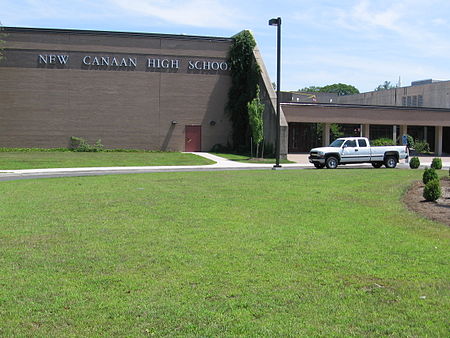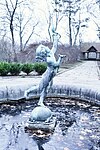New Canaan High School

New Canaan High School is the only public high school in New Canaan, Connecticut. In 2017, it was ranked the best public high school in Connecticut, and one of the top 200 in the nation. New Canaan High School was ranked the 74th best STEM high school in the nation by U.S. News & World Report.The school is a part of the Fairfield County Interscholastic Athletic Conference, otherwise known as the FCIAC. The New Canaan Rams have won numerous state championships. New Canaan is known for its competitive football, lacrosse, ice hockey, and tennis teams. Its football team holds 22 state championships and is consistently a top 10 team in the state. In 2016, its boys' lacrosse team was ranked 3rd in the nation.
Excerpt from the Wikipedia article New Canaan High School (License: CC BY-SA 3.0, Authors, Images).New Canaan High School
Farm Road,
Geographical coordinates (GPS) Address Nearby Places Show on map
Geographical coordinates (GPS)
| Latitude | Longitude |
|---|---|
| N 41.1288 ° | E -73.4895 ° |
Address
New Canaan High School
Farm Road
06840
Connecticut, United States
Open on Google Maps









